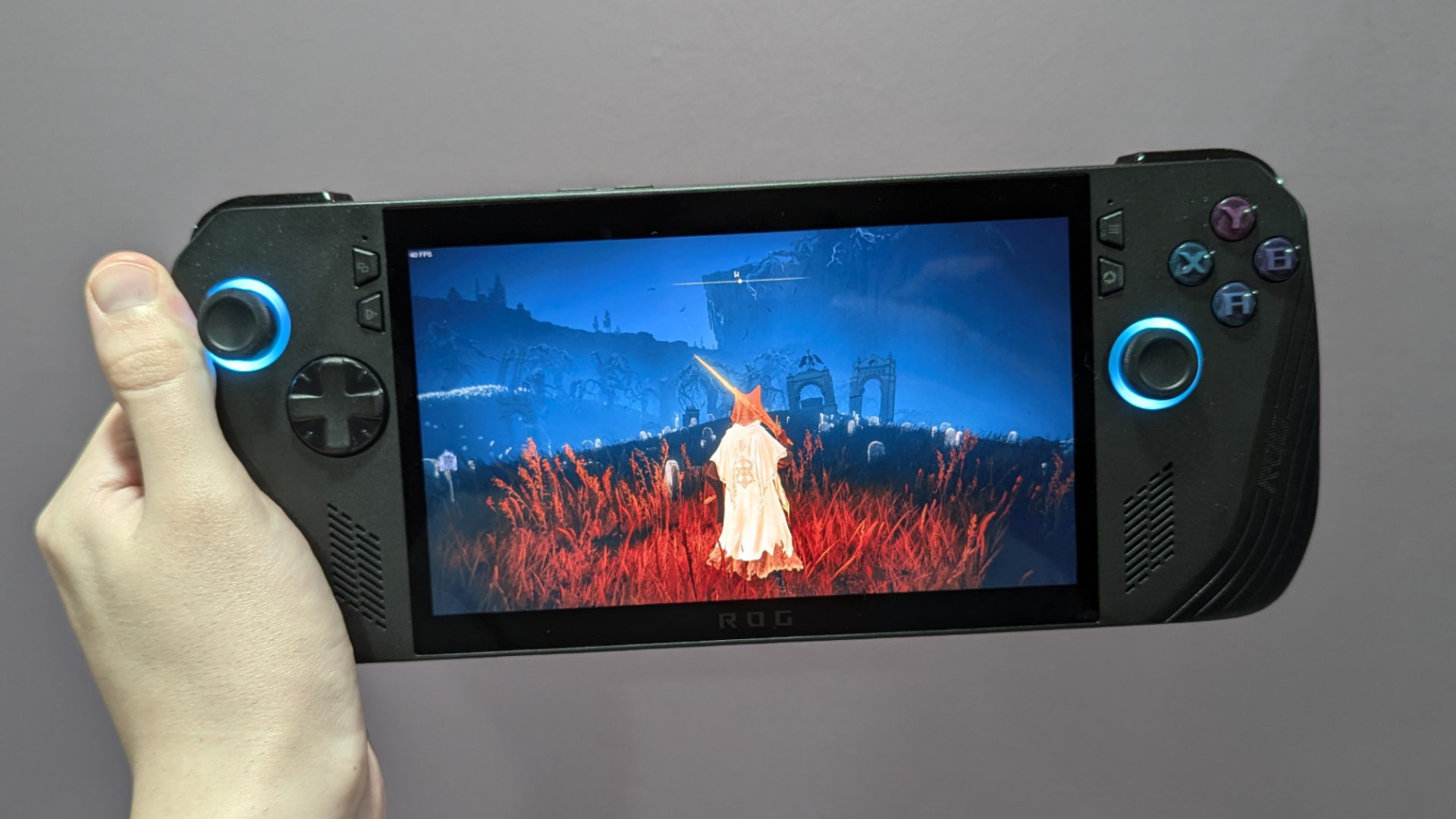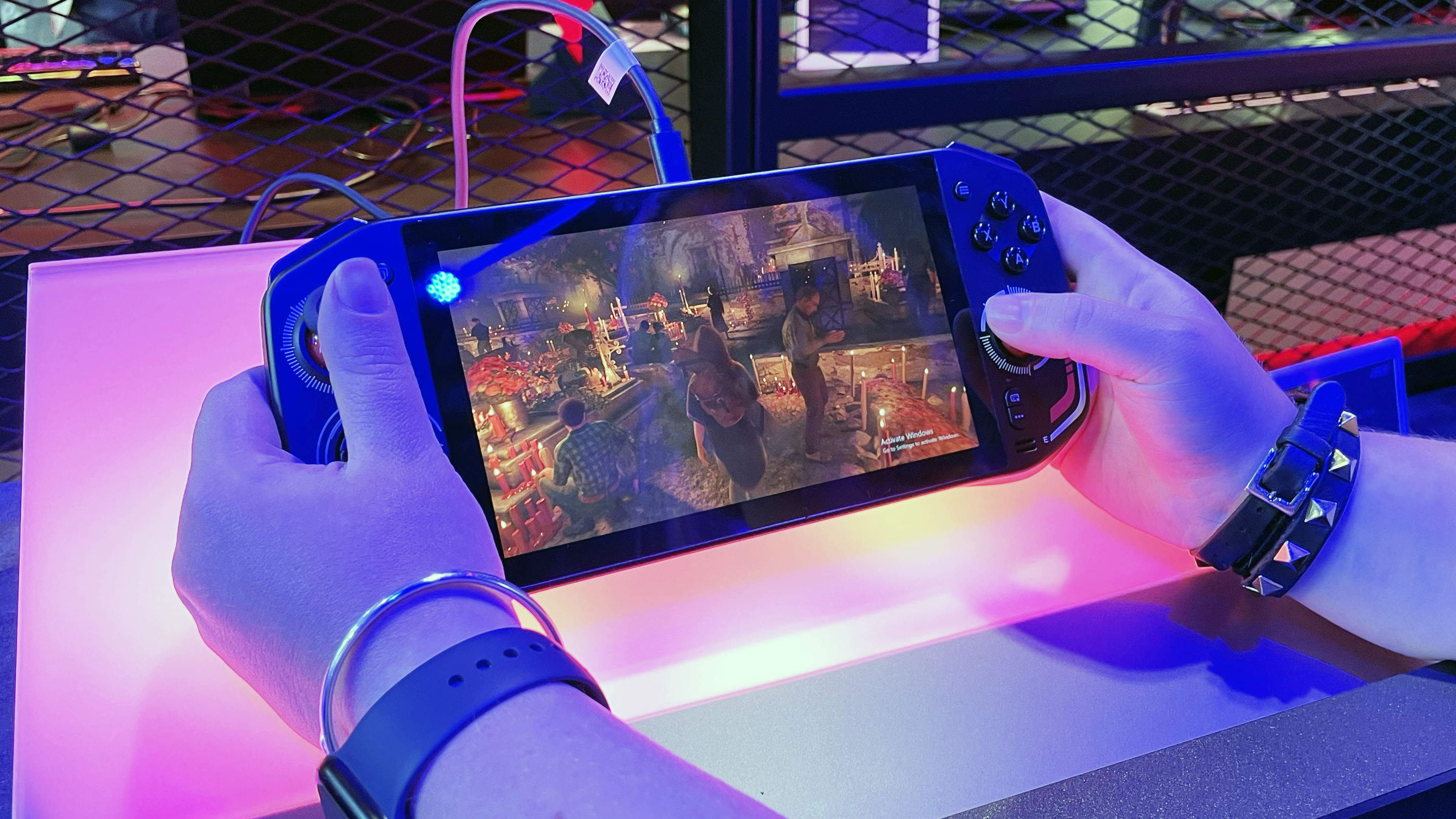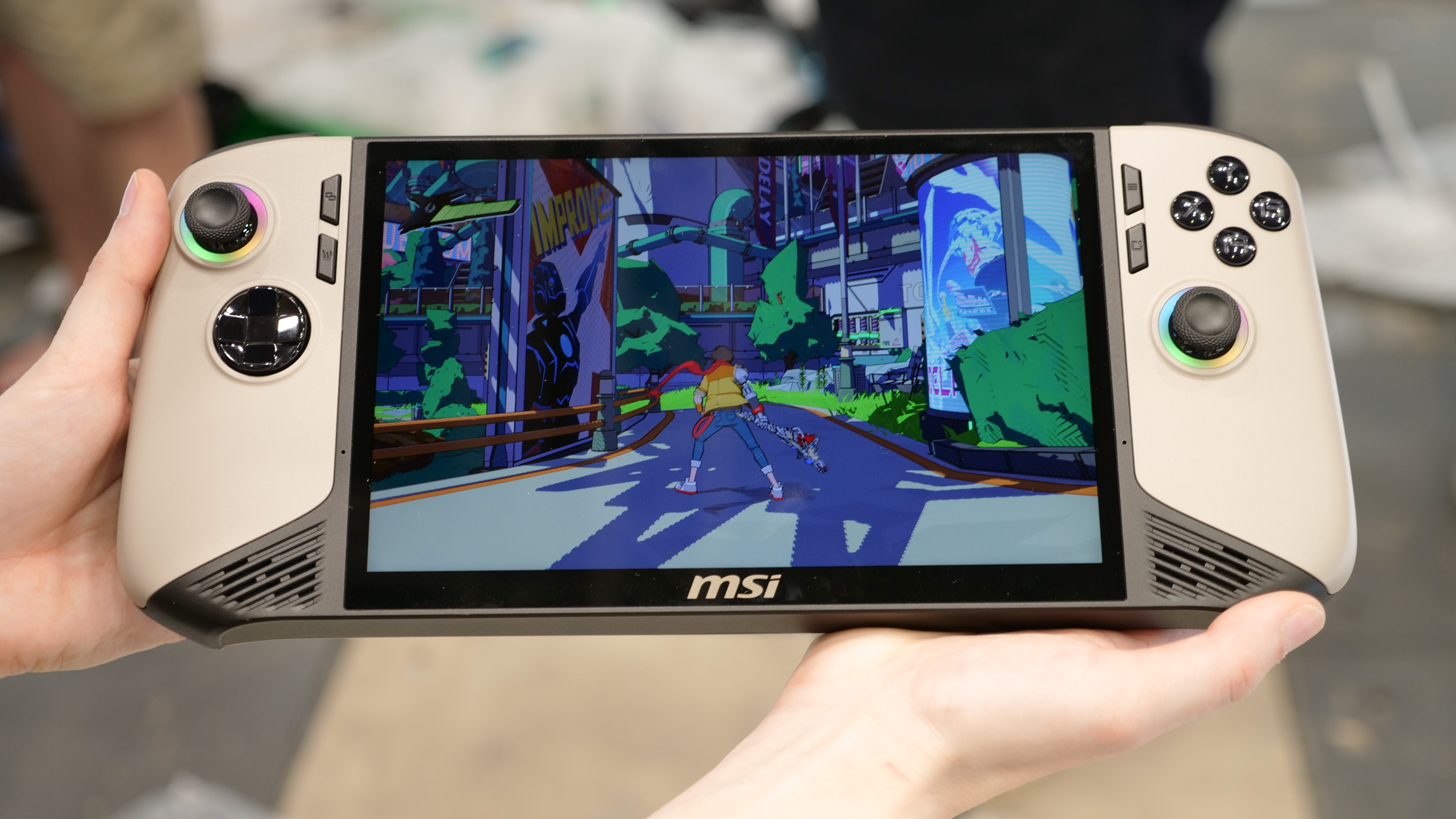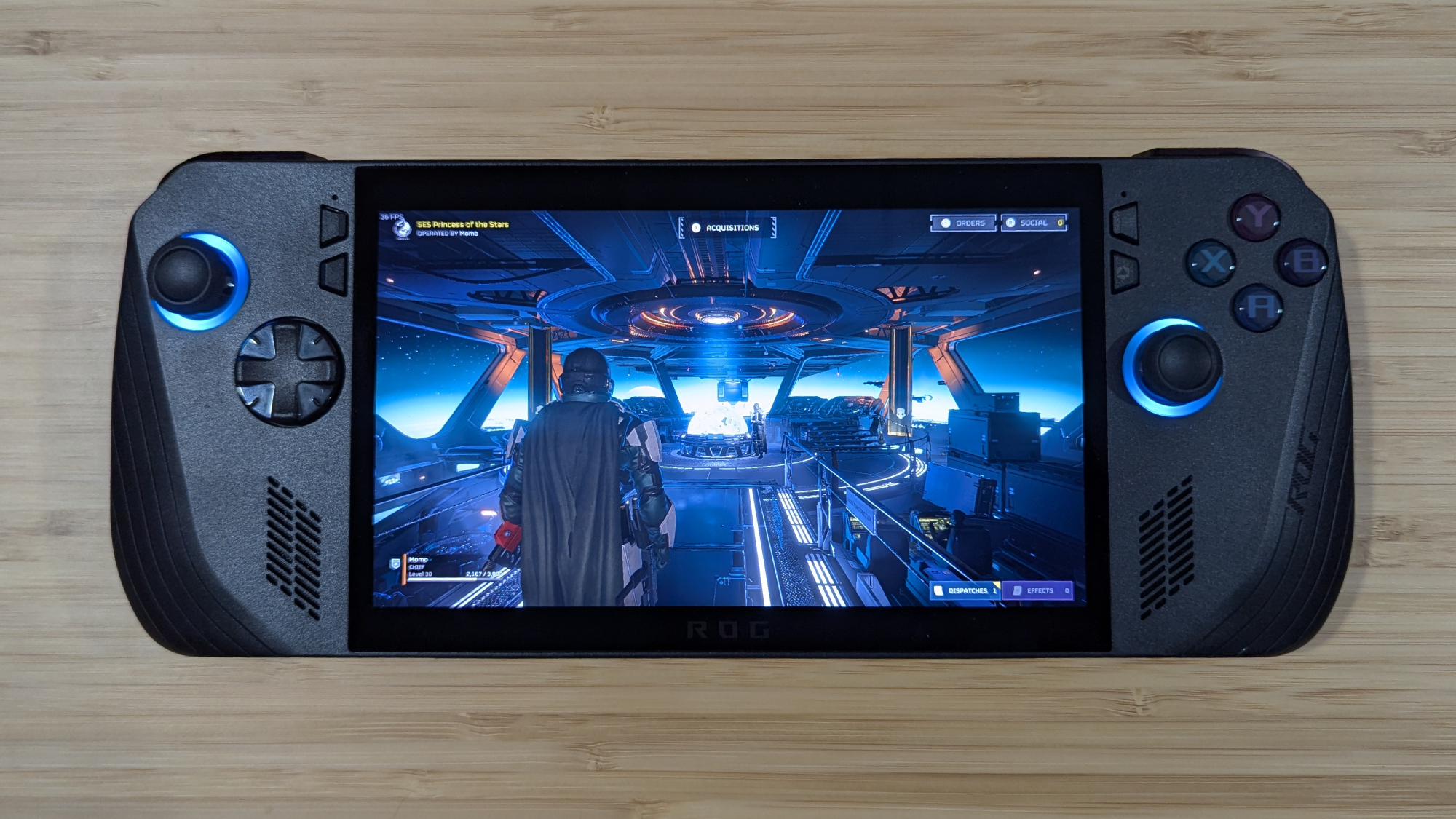
A recent announcement from AMD could spell disaster for unreleased Windows gaming handhelds, so you might want to wait before spending any money.
Chipmaker AMD confirmed last week in a joint conference with Microsoft at IFA 2024 that the AMD Ryzen Z2, successor to the Z1 chip that powers Windows gaming handhelds like the Asus ROG Ally and Lenovo Legion Go, would launch in early 2025.
New Asus ROG Ally and Lenovo Legion Go models will likely follow in 2025, ringing in the next generation of Windows gaming handheld consoles. This is due to Asus and Lenovo commitment to the hardware, with the Ally seeing a mid-generation refresh with the Ally X, alongside confirmation from Lenovo that there are “engineering efforts to try to bring the next wave of features to the product,” according to Lenovo Gaming Category Manager Clifford Chong.
However, AMD’s announcement about the coming Ryzen Z2 chip might be worrying for those in the market for a Windows gaming handheld, especially when announced-but-still-unreleased hardware has previous generation chips. Those handheld devices with older chips may be outdated while still on the shelves.
Upcoming Windows gaming handhelds are in trouble
Launching products with older hardware when new chips are launching is never a great look, especially if waiting just a few months can yield significantly improved performance for around the same cost.
For example, another IFA 2024 announcement was for the Acer Nitro Blaze 7 gaming handheld. Its release date and price are still to be announced, but it’s built with the AMD Ryzen 7 8840HS, which features an equivalent graphics solution (AMD Radeon 780M) to the AMD Ryzen Z1 Extreme that powers the Asus ROG Ally and Lenovo Legion Go. The Zotac Zone, another Windows gaming handheld powered by the AMD Ryzen 7 8840U, is also not available yet.

The issue here is that the base Ally launched in June 2023 nearly a year and a half ago. Now that the chip that will power the next generation of the Asus ROG Ally has been unveiled —with a launch of early 2025 — it might be wise for gamers to save their money and wait until the new year. Acer and Zotac need to launch their Windows gaming handhelds as soon as possible or find themselves buried by the next generation of Windows gaming handhelds.
Another unreleased Windows gaming handheld console, the MSI Claw 8 AI Plus, successor to the base Claw that launched earlier this year, is already confirmed to launch in early 2025. However, unlike Acer and Zotac, the Claw 8 AI Plus features next-generation hardware: the Intel Lunar Lake processor. This could make it a worthy competitor to Windows gaming handhelds powered by AMD Ryzen Z1 Extreme.
Meteor Lake couldn’t stand up against Ryzen Z1 Extreme
When comparing the current generation MSI Claw (which is powered by Intel Core Ultra 7 155H) to devices featuring AMD Ryzen Z1 Extreme, the performance difference is enormous. Even after MSI released updates to enhance the performance, it was still nowhere near what the Asus ROG Ally was capable of.
The MSI Claw hovered around 40 to 50 frames per second on Doom Eternal with graphic settings at high and resolution at 1080p, while the Z1 Extreme powered Asus ROG Ally hovered between 60 and 70 fps. When playing Helldivers on low graphics at 1080p, the MSI Claw (30-40 fps) experienced some stuttering, while the Asus ROG Ally (40-45 fps) didn’t stutter and managed higher frames per second.

Ideally, MSI would benefit from its hardware launching as soon as new Intel chips are available, as it would likely give the company a temporary advantage in graphical performance when pitting the Intel Lunar Lake against the Ryzen Z1.
After all, if MSI had launched a new Claw handheld gaming console alongside the September launch of Lunar Lake chips, it could be number one in graphical performance for several months before Asus or Lenovo implement their machines with the latest AMD Z2 Extreme processor.
There’s one hole in the argument to wait until 2025 when the AMD Ryzen 2 processor comes out, and it’s the assumption that Intel Lunar Lake won’t be able to win against Ryzen Z2. After all, Lunar Lake is already available, and the MSI Claw 8 AI Plus is probably launching before Asus or Lenovo can make use of the Ryzen Z2. If it truly is the case that MSI goes above and beyond with Intel Lunar Lake, you might only have to wait until the Claw 8 AI Plus launches.
However, we’re doubtful that Intel will get this far. This comes from years of AMD triumphing against Intel in integrated graphics, and considering what we’ve seen in gaming performance when comparing Meteor Lake against Ryzen Z1 (both launched in 2023), we expect to see a similar result in the next generation.
Intel has big ambitions for Lunar Lake
Intel isn’t playing nice according to what we know about Lunar Lake’s integrated Xe2 graphics solution, as Jim Johnson, Corporate Vice President and General Manager of Client Engineering at Intel, claimed it is “the fastest built-in GPU in the industry” during its Intel Core Ultra launch event at IFA 2024. What a company says about its products isn’t necessarily reliable information, but it’s clear that Intel is coming into this with confidence.
Laptop Mag got a chance to visit Intel at IFA 2024, and the company provided a demonstration of how much faster the Intel Lunar Lake processors are in comparison to AMD Strix Point.
The AMD Ryzen AI 300, which is a Strix Point chip that might resemble the power of the Ryzen Z2 (via Jez Corden from Windows Central), achieved 60 frames per second while playing the racing game F1 24 on high graphics with resolution at 1080p. An unspecified Intel Core Ultra 200V averaged above 70 fps during the same test.
Again, Intel presented this information, so it’s worth taking with a grain of salt. It’s clear that the company is confident about its latest integrated graphics solution.
Wait on buying a Windows gaming handheld
Early 2025 isn’t far away, and if the next-generation graphics solution will be coming to Windows gaming handhelds shortly after, investing in a product sporting a chip a year and a half old (Ryzen Z1 launched May 2023) isn’t worthwhile for most.
However, current generation hardware is a great option if you’re more concerned about affordability in your Windows gaming handheld than anything else. Gamers are spoiled for choice when it comes to gaming handhelds right now.

The base Asus ROG Ally launched at $599 but has dropped down to $499, with occasional sales at $399. The AMD Z1 Extreme version of the ROG Ally’s $699 launch price dropped down to $649, and we’ve seen it discounted as low as $499. Even the $749 Lenovo Legion Go has seen price drops down to $579 in the past.
When the Ryzen Z2 models of the Asus ROG Ally launch next year, they will likely feel fairly expensive, and it’ll take time before discounts appear, putting budget-conscious consumers in a tough spot.
If you’d rather invest in a cheaper handheld, get current models of the Asus ROG Ally or Lenovo Legion Go for their discounted prices when they’re available.
If you care about graphical performance first and foremost, you’re better off waiting for gaming handhelds with Ryzen Z2 graphics to launch.







